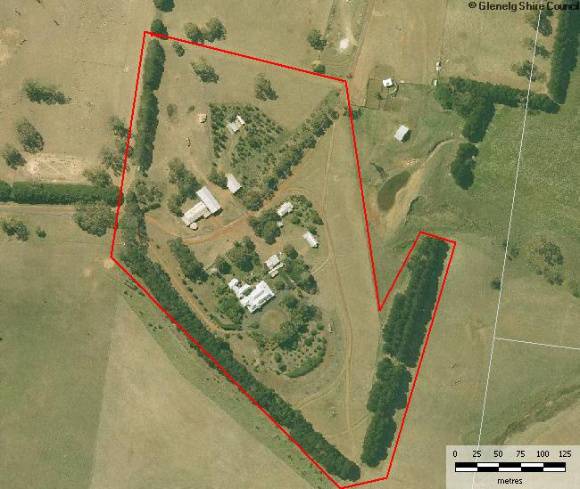| Back to search results » | Back to search page » |
|
WANDO ESTATE HOMESTEAD COMPLEX
Location1550 CASTERTON-EDENHOPE ROAD, WANDO BRIDGE, GLENELG SHIRE LevelRecommended for Heritage Overlay |
|
Statement of Significance
What is Significant?
The first homestead and woolshed of Wando Estate, or Wando Station or Wando B as it was known in earlier days, were located on the east bank of the Wando River, approximately 1.5km south-east of the present homestead. The squatting run had been taken up by William Corney in 1840 and he purchased the Pre-emptive Right in 1852. The property passed through various hands and in c1886, Wando Station was purchased by the Broughton Bros. reputedly for 'somewhere about a hundred thousand pounds'. William Broughton, who lived on the station, commissioned well-known Melbourne architect H.B. Gibbs to design a new homestead and tenders were called in 1894. The successful contractor was Mr. Henningsen, who was responsible for many important buildings in Melbourne, and the clerk of works was Mr. Henry Kohn of Merino. It was described fulsomely in the local press as a mansion of 17 rooms. The large timber residence is a late and conservative example of the Italianate style, although it does include very rich decoration and finishes typical of Melbourne's 'boom' mansions. The plan is unusual for its transverse disposition and semi-detached kitchen wing. The homestead is set in an extensive and now mature compartmentalized garden. In the early twentieth century the property passed to the Armytage family. The integrity of the building has been compromised by the loss of some detailing after WW2 and other alterations. It is mostly in very good condition. A new woolshed was built after WW2 and other cottages were built about the same time.
How is it Significant?
Wando Estate Homestead is of historical, social and architectural significance to the Glenelg Shire.
Why is it Significant?
Wando Estate Homestead is of historical significance for its direct associations with the Broughton and Armytage families and, indirectly, with several other prominent early pastoral families. It is of social significance for its construction by local workmen, using materials provided by local firms, during a period of state-wide economic depression in what appears to have been a conscious effort at philanthropy. It is of architectural significance as a rural work of the prominent architect, Harry B. Gibbs, which although grand, richly detailed and unusual in its planning, is still conservative in its late use of the Italianate style. It is of further interest for its association with the Melbourne contractor, Henningsen and for its construction under the supervision of a clerk of works, Henry Kohn of Merino.
Group
Farming and Grazing
Category
Homestead Complex





